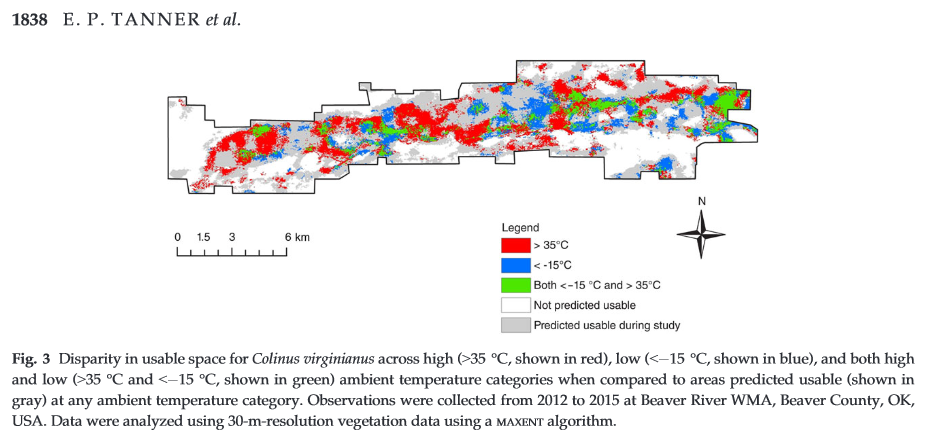Earlier this week, a post on the Rolling Plains Quail Research Ranch Facebook page featured a covey of bobwhites huddled up against the cold weather. This leads us to an excellent NatNotes topic: what do wildlife do when it’s cold? Across the rangelands of Texas, some critters are more familiar with cold than others. Most of the bobwhites in south Texas probably haven’t seen this much cold weather in a couple generations, while quail on the High Plains of the Panhandle experience freezing temperatures more regularly. So for some insights about the impact of cold weather on quail, today we’ll turn to some research by our neighbors to the north.
A recent study by Dr. Evan Tanner and collaborators at Oklahoma State and Utah State universities looked at how the habitat use of northern bobwhites can be affected by weather — both extremely hot and extremely cold conditions. They found that the habitat suitable for quail during temperature extremes is greatly restricted compared to the areas quail will use at intermediate temperatures. Furthermore, the places where bobwhite sought shelter from cold were not necessarily the same as those they used to escape the heat.
So what does this mean for land managers? Quality, “crazy quilt” habitat is so important for quail! Good quail habitat will contain a mix of brush, bunch grasses, forbs, and open space, so that quail can move around to suitable areas depending on weather and seasonal needs. In the summer, bunch grasses can protect quail eggs from dry, hot temperatures, while brush mottes offer shade to chicks and adults. In the winter, low, dense brush and other vegetation can shelter quail from the cold.
For more information on managing quail habitat, check out the resources on our quail page.

Figure 3 from Tanner, E. P., R. D. Elmore, S. D. Fuhlendorf, C. A. Davis, D. K. Dahlgren, and J. P. Orange. 2017. Extreme climatic events constrain space use and survival of a ground-nesting bird. Global Change Biology 23:1832-1846. Open access article published under Creative Commons license CC BY 4.0. See description for link to original work.